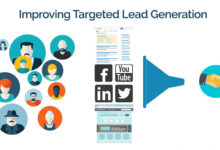Leads in Spanish: 7 Powerful Strategies to Dominate the Market
Want to unlock a massive, fast-growing market? Mastering leads in Spanish could be your golden ticket. With over 580 million Spanish speakers worldwide, tapping into this audience isn’t just smart—it’s essential for explosive growth.
Why Leads in Spanish Are a Game-Changer for Global Businesses

Spanish is the second most spoken language in the world by native speakers, with a presence in over 20 countries. From Spain to Argentina, Mexico to Colombia, generating leads in Spanish opens doors to diverse, vibrant markets hungry for quality products and services. The demand for localized content and communication is no longer optional—it’s a competitive necessity.
The Global Reach of Spanish-Speaking Markets
Spanish is not just a language; it’s a cultural gateway. It’s the official language in 21 countries, including powerhouse economies like Mexico, Argentina, and Spain. According to the Ethnologue, there are over 485 million native Spanish speakers, and when including second-language speakers, that number jumps to more than 580 million. This makes Spanish the second most spoken language globally, trailing only Mandarin Chinese.
- Mexico alone has over 125 million Spanish speakers.
- The U.S. Hispanic population exceeds 62 million, making it the largest minority group.
- Spain, though smaller in population, has a high digital penetration rate, ideal for online lead generation.
This widespread usage means that businesses focusing on leads in Spanish can access a vast, engaged audience across continents. Whether you’re selling SaaS, e-commerce products, or financial services, Spanish-speaking consumers represent a high-potential market segment.
Why Localization Beats Translation Every Time
Simply translating English content into Spanish isn’t enough. True success in generating leads in Spanish comes from localization—adapting your message to fit cultural nuances, regional dialects, and consumer behavior. For example, the Spanish used in Spain (Castilian) differs significantly from that in Latin America in terms of vocabulary, tone, and even pronunciation.
“Localization is not about language; it’s about relevance. A message that resonates in Mexico may fall flat in Argentina if not properly adapted.” — Maria Gonzalez, Localization Expert at GlobalReach Consulting
Consider these key differences:
- In Spain, “computer” is often referred to as “ordenador,” while in Latin America, it’s “computadora.”
- Marketing tone in Argentina tends to be more informal and humorous, whereas in Colombia, a respectful and formal tone performs better.
- Payment preferences vary: credit cards dominate in the U.S. Hispanic market, while cash and local payment methods like OXXO in Mexico are preferred in other regions.
By investing in true localization—not just translation—you build trust, increase engagement, and ultimately convert more leads in Spanish-speaking regions.
Top 7 Strategies to Generate High-Quality Leads in Spanish
Generating leads in Spanish requires more than just language skills—it demands strategy, cultural insight, and the right tools. Below are seven proven strategies that top-performing companies use to capture, nurture, and convert Spanish-speaking leads.
1. Create Culturally Relevant Content in Spanish
Content is king, but relevance is queen. When targeting leads in Spanish, your content must reflect the values, interests, and pain points of your audience. This means going beyond direct translation and crafting original content that speaks directly to regional concerns.
- Write blog posts about local holidays like Día de Muertos (Mexico) or Feria de Abril (Spain).
- Produce videos featuring native Spanish speakers from the target region.
- Use local idioms and expressions to build rapport and authenticity.
For example, a financial services company targeting leads in Spanish might create a guide titled “Cómo Ahorrar para la Universidad de Tus Hijos en México” instead of a generic “How to Save for College.” This specificity increases relevance and trust.
2. Optimize Your Website for Spanish SEO
Search engine optimization (SEO) in Spanish is critical for visibility. Many businesses make the mistake of assuming that English SEO tactics work the same way in Spanish. However, keyword behavior, search intent, and competition differ significantly.
Use tools like Ahrefs or SEMrush to research high-volume, low-competition keywords in Spanish. For example, instead of targeting “leads in Spanish,” you might focus on “generar leads en español” or “cómo conseguir clientes en español.”
- Use hreflang tags to tell search engines which language version of your site to show.
- Create dedicated Spanish landing pages with localized meta titles and descriptions.
- Ensure your site loads quickly and is mobile-friendly—especially important in Latin America, where mobile internet usage is dominant.
According to Statista, over 70% of internet users in Latin America access the web via mobile devices, making responsive design non-negotiable.
3. Leverage Social Media Platforms Popular in Spanish-Speaking Regions
Social media is a goldmine for generating leads in Spanish. However, platform popularity varies by region. While Facebook and Instagram are widely used across the board, platforms like Tuenti (popular in Spain) or WhatsApp (dominant in Latin America) offer unique opportunities.
- In Mexico and Argentina, WhatsApp is a primary channel for customer service and lead nurturing.
- In Spain, Facebook groups and Instagram Stories drive high engagement.
- YouTube is extremely popular across all Spanish-speaking regions for educational and product review content.
Run targeted ad campaigns in Spanish on these platforms, using culturally appropriate visuals and messaging. For example, a fitness brand might create a TikTok challenge in Colombia using reggaeton music to promote a new workout program.
4. Use Email Marketing with Personalized Spanish Campaigns
Email remains one of the highest ROI channels for lead nurturing. When targeting leads in Spanish, personalize your campaigns with local names, dates, and references.
- Segment your list by country or region (e.g., Mexico vs. Spain).
- Use subject lines like “¡Oferta Especial para Ti, María!” to increase open rates.
- Send emails on days and times that align with local behavior—avoid sending on public holidays like Día de la Independencia in Mexico (September 16).
Tools like Mailchimp and ActiveCampaign support multilingual email automation, allowing you to scale personalized campaigns across regions. A/B test different versions to see what resonates best with your audience.
5. Partner with Influencers in the Spanish-Speaking World
Influencer marketing is booming in Spanish-speaking markets. Micro-influencers (those with 10k–100k followers) often have higher engagement rates and more trusted voices than celebrities.
- In Spain, beauty and fashion influencers on Instagram drive strong conversions.
- In Latin America, YouTube tech reviewers are trusted sources for product recommendations.
- Collaborate with influencers who align with your brand values and speak the local dialect.
For example, a software company targeting leads in Spanish might partner with a Colombian YouTuber to create a tutorial on how to use their CRM tool in a Latin American business context. This builds credibility and drives qualified traffic.
6. Offer Live Chat and Customer Support in Spanish
Nothing converts leads faster than real-time support. Offering live chat in Spanish shows your commitment to customer experience and removes language barriers.
- Use chatbots powered by AI that understand regional slang and expressions.
- Train human agents to handle common queries in Latin American and European Spanish.
- Display trust signals like “Atención en Español” or “Hablamos Español” on your website.
According to a study by Nielsen, 76% of Spanish-speaking consumers are more likely to buy from a company that offers customer service in their native language.
7. Run Targeted Paid Ads in Spanish on Google and Meta
Paid advertising is one of the fastest ways to generate leads in Spanish. Platforms like Google Ads and Meta (Facebook & Instagram) allow precise targeting by language, location, and behavior.
- Create ad copy that speaks directly to local pain points (e.g., “¿Cansado de pagar altos intereses en México?”).
- Use images of people from the target region to increase relatability.
- Set up conversion tracking to measure ROI and optimize campaigns.
For example, a real estate company in Florida targeting U.S. Hispanics might run Facebook ads in Spanish promoting “Casas Asequibles en Miami para Familias Latinas.” This hyper-local approach increases relevance and conversion rates.
Common Mistakes to Avoid When Targeting Leads in Spanish
Even well-intentioned campaigns can fail if they overlook cultural or linguistic nuances. Here are some common pitfalls to avoid when generating leads in Spanish.
Mistake #1: Using Machine Translation Without Human Review
While tools like Google Translate are helpful, they often produce awkward or incorrect phrasing. For example, “I’m excited” translated as “Estoy excitado” can imply sexual arousal in Spanish, rather than enthusiasm. The correct phrase would be “Estoy entusiasmado.”
Always have native speakers review your content before publishing. This ensures accuracy and cultural appropriateness.
Mistake #2: Assuming All Spanish Speakers Are the Same
Spanish is not a monolithic language. There are significant differences between dialects, accents, and cultural references. A campaign that works in Spain may not resonate in Chile or Puerto Rico.
- Avoid using “vosotros” (used in Spain) when targeting Latin America, where “ustedes” is standard.
- Be mindful of political sensitivities—e.g., referring to “Spain” vs. “España” in Catalonia.
- Use region-specific currency, date formats, and measurement units.
Treat each market as unique, even if they share a language.
Mistake #3: Ignoring Local Regulations and Data Privacy Laws
Compliance is critical. Spain follows the GDPR, while countries like Mexico have their own data protection laws (e.g., LFPDPPP). Failing to comply can result in fines and damage to your brand’s reputation.
- Obtain explicit consent before collecting personal data.
- Provide clear privacy policies in Spanish.
- Allow users to opt out of marketing communications easily.
Consult with legal experts familiar with the target country’s regulations to ensure compliance.
Tools and Technologies to Scale Your Leads in Spanish Efforts
Scaling lead generation in Spanish requires the right tech stack. Here are essential tools to streamline your efforts.
Marketing Automation Platforms
Tools like HubSpot, Marketo, and ActiveCampaign support multilingual workflows. You can create automated email sequences, lead scoring, and CRM integration—all in Spanish.
- Set up lead nurturing campaigns based on user behavior (e.g., downloading a Spanish-language eBook).
- Use dynamic content to show different messages based on the user’s location.
- Track conversion rates by language and region to optimize performance.
Translation and Localization Management Tools
Platforms like Smartling, Lokalise, and Transifex help manage large-scale translation projects. They integrate with your CMS and ensure consistency across all content.
- Build a glossary of approved terms to maintain brand voice.
- Collaborate with professional translators and reviewers in one dashboard.
- Automate content updates across multiple languages.
AI-Powered Chatbots in Spanish
Chatbots like Intercom, Drift, and Tidio offer Spanish language support and can handle common inquiries 24/7.
- Train your bot on frequently asked questions in Spanish.
- Use natural language processing (NLP) to understand regional variations.
- Escalate complex issues to human agents when needed.
These tools reduce response time and improve lead qualification rates.
Measuring the Success of Your Leads in Spanish Campaigns
Generating leads in Spanish is only half the battle—measuring and optimizing performance is what drives long-term success.
Key Metrics to Track
To evaluate your campaigns, focus on these KPIs:
- Conversion rate by language/region
- Cost per lead (CPL) in Spanish vs. English
- Click-through rate (CTR) on Spanish ads and emails
- Time to conversion for Spanish-speaking leads
- Customer lifetime value (CLV) of Spanish-speaking customers
Use Google Analytics with segmentation to compare performance across language groups.
A/B Testing for Continuous Improvement
Run A/B tests on headlines, CTAs, landing pages, and email subject lines in Spanish. For example, test “Obtén tu Guía Gratis” vs. “Descarga tu Manual Ahora” to see which drives more conversions.
“The smallest change in wording can lead to a 30% increase in conversions. Always test, never assume.” — Carlos Mendez, Growth Strategist at LatamGrowth
Use tools like Google Optimize or Optimizely to run multivariate tests and refine your approach over time.
Case Studies: Brands That Mastered Leads in Spanish
Real-world examples show what’s possible when done right.
Case Study 1: Netflix’s Localization Strategy
Netflix doesn’t just translate its content—it localizes it. From dubbing shows with regional accents to creating original Spanish-language series like “La Casa de Papel,” Netflix has captured millions of leads in Spanish-speaking markets.
- Invested in local content production in Mexico, Spain, and Colombia.
- Used personalized recommendations based on viewing habits in Spanish.
- Offered customer support in multiple Spanish dialects.
Result: Over 70% of Netflix’s international subscribers come from non-English-speaking regions, with Latin America being a top growth market.
Case Study 2: Shopify’s Spanish E-Commerce Push
Shopify expanded into Latin America by offering full platform support in Spanish, including onboarding, help center, and marketing resources.
- Launched localized webinars and training in Spanish.
- Partnered with local payment gateways like Mercado Pago.
- Created success stories featuring Latin American entrepreneurs.
Result: A 200% increase in merchant sign-ups from Spanish-speaking countries within two years.
The Future of Leads in Spanish: Trends to Watch
The landscape for generating leads in Spanish is evolving rapidly. Stay ahead with these emerging trends.
Rise of Voice Search in Spanish
With the growth of smart speakers and voice assistants, optimizing for voice search in Spanish is becoming crucial. Users are increasingly asking questions like “¿Dónde compro café orgánico cerca de mí?” using natural language.
- Optimize content for long-tail, conversational keywords.
- Use structured data (schema markup) to help search engines understand your content.
- Focus on local SEO for “near me” type queries.
Growth of Spanish-Language Video Content
Platforms like YouTube, TikTok, and Instagram Reels are driving video consumption in Spanish. Short-form, engaging videos are highly effective for lead generation.
- Create explainer videos, testimonials, and behind-the-scenes content in Spanish.
- Use captions and subtitles to improve accessibility.
- Leverage trending audio and challenges to boost visibility.
AI and Hyper-Personalization
AI is enabling hyper-personalized experiences for Spanish-speaking users. From dynamic website content to predictive lead scoring, the future is about delivering the right message at the right time.
- Use AI to analyze user behavior and recommend relevant content.
- Personalize email subject lines based on past interactions.
- Deploy chatbots that learn from each conversation to improve over time.
Brands that embrace these trends will dominate the leads in Spanish space in the coming years.
What does ‘leads in Spanish’ mean?
Leads in Spanish refers to potential customers or prospects who speak Spanish and are interested in your product or service. Generating these leads involves marketing, communication, and sales efforts conducted in the Spanish language, often tailored to specific cultural and regional contexts.
How do I generate leads in Spanish effectively?
To generate leads in Spanish effectively, focus on localization (not just translation), use region-specific SEO strategies, leverage popular social media platforms, run targeted ads, and offer customer support in Spanish. Always tailor your messaging to the cultural nuances of your target audience.
Which countries have the most potential for leads in Spanish?
Mexico, Spain, Colombia, Argentina, and the U.S. Hispanic market are among the top regions for generating leads in Spanish. Each has unique consumer behaviors, so strategies should be adapted accordingly.
Do I need different strategies for Latin America vs. Spain?
Yes. While both regions speak Spanish, there are significant differences in dialect, culture, and consumer preferences. For example, Spain uses “vosotros” and follows GDPR, while Latin America uses “ustedes” and has different data privacy laws. Always customize your approach by region.
Can I use Google Translate for my Spanish marketing?
Google Translate can be a starting point, but it should never be the final step. Machine translation often misses cultural context and can produce awkward or incorrect phrasing. Always have native speakers review and refine your content for accuracy and tone.
Generating leads in Spanish is no longer a niche strategy—it’s a necessity for any business aiming for global growth. From creating culturally relevant content to leveraging AI-driven personalization, the opportunities are vast. By avoiding common mistakes, using the right tools, and staying ahead of trends, you can build a powerful pipeline of Spanish-speaking leads. The key is authenticity, localization, and continuous optimization. Start today, and unlock the full potential of the Spanish-speaking world.
Further Reading:



